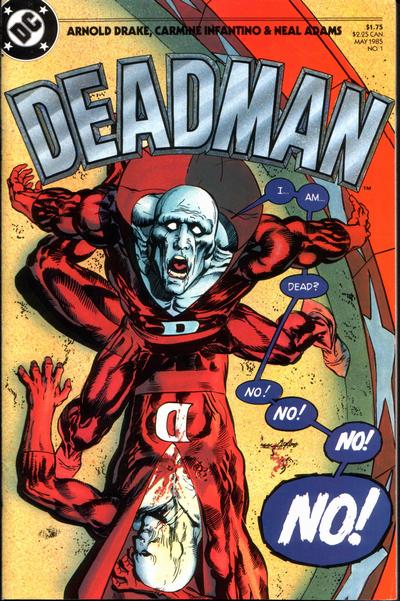
A little more than five years ago (wow, has this blog really been around that long?), I reviewed the masterpiece that was the Andrew Helfer/Jose Luis Garcia Lopez (praised be his name) four-issue Deadman miniseries from 1986. As I was reading, I saw a couple of references to a recently-published series, which is where that book picked up from. So I headed to Mike’s Amazing World and discovered that there was a seven-issue Baxter-paper series published a few years earlier.
This particular series was an experiment that DC undertook in the very late Bronze Age before the idea of a trade paperback became commonplace. The company had always reprinted old stories, especially through the 1960s and 1970s, but the rise of the direct market and the use of Baxter paper in a number of books led to a few series that reprinted classic stories on the better paper. If I recall correctly, the stories being reprinted were classic Green Lantern/Green Arrow stoires from Denny O’Neil and Neal Adams, The Englehart/Rogers Batman run, Jack Kirby’s New Gods, and these classic Deadman stories from Arnold Drake, Carmine Infantino, Neal Adams, Bob Haney, and Jim Aparo. I’m not sure why these particular books were chosen (aside from maybe the Neal Adams factor), but when I found a few issues in cheap bins, they wound up being a real treat.
The Baxter Deadman reprints are stories originally told in issues of books like The Brave and the Bold and Strange Adventures and go chronologically from the origin of the character, as we see Boston Brand get shot in midair and become cursed to find his murderer. The stories have a pretty solid continuity that centers around this conceit but also have a “case of the week” feel . I know they’re not every Deadman appearance, but we get his very first appearance with what I guess are several key stories before his last appearance (continuity-wise/story-wise) before that 1985/86 minieries. And since there isn’t a lot of the baggage that can come with having to work your way through every single appearance of the character, the streamlined format is enjoyable.
Plus, the art is gorgeous on the Baxter paper, especially the art by Adams and Aparo. Later reprints of Adams’ work would have a more “modern” recoloring that muddied things and made them look off; here, things feel like they’re more of a color “adjustment” with the dullness of the original newsprint taken away. Of course, that means that the Baxter paper winds up bringing out the flaws in the artwork, which is something I’ve always been critical of when it comes to Eduardo Barretto’s work on The New Teen Titans. Here, though, Adams and Aparo (and Infantino to a certain extent but I’m hot and cold on his overall body of work) are nearly flawless and the artwork is amazing.
There’s no place in today’s comics world for a series like this. Even as we headed into the late 1980s, trade paperback collections began to become the primary method of getting reprinted stories (with the possible exception of a few reprint series like Marvel’s Tales of G.I. Joe and Classic X-Men); I figure that these Baxter series were DC’s way of “testing the waters” of the direct market before really taking on something more bold. That being said, this miniseries was fun to collect and reading it, then re-reading the post-Crisis miniseries was fun as well.
Keep, Sell, Donate, or Trash?
Keep.
